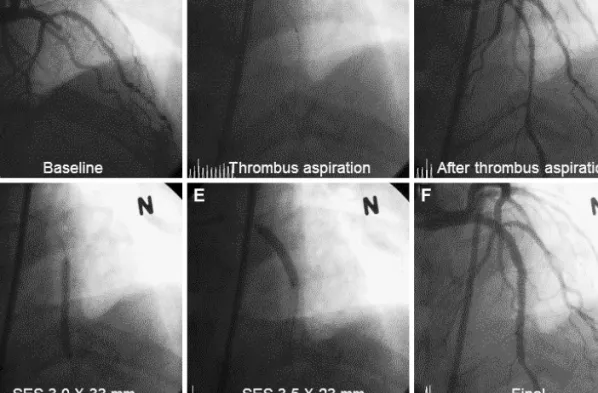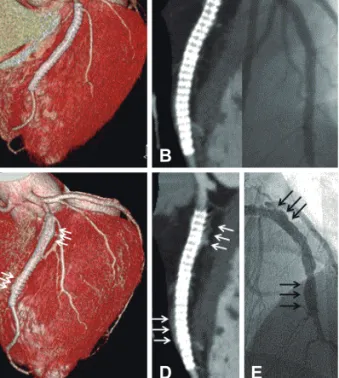559
Print ISSN 1738-5520 / On-line ISSN 1738-5555 Copyright © 2011 The Korean Society of Cardiology CASE REPORT
http://dx.doi.org/10.4070/kcj.2011.41.9.559
Open Access
Development of a Coronary Aneurysm at a Sirolimus-Eluting
Stent-Implanted Lesion in a Patient With Churg-Strauss Syndrome
Yujung Cho, MD
1, Hyunmin Choe, MD
1, Bo Ram Kang, MD
1, Min Yong Park, MD
1, Joon Hyung Doh, MD
1, Jae-Jin Kwak, MD
1, Bo Young Yoon, MD
2, June Namgung, MD
1, Sung Yun Lee, MD
1, and Gam Hur, MD
31
Departments of Internal Medicine, Vision 21 Cardiac and Vascular Center,
2Rheumatology and
3Radiology, Ilsan Paik Hospital, Goyang, Korea
ABSTRACT
A coronary aneurysm (CA) can occur in sirolimus-eluting stent (SES)-implanted coronary lesions. Although several possi- ble mechanisms have been suggested, the precise pathogenesis of a CA in SES-implanted lesions is still unknown. We report a patient with Churg-Strauss syndrome who underwent successful percutaneous coronary intervention with SES and then experienced a CA in an SES-implanted coronary lesion. We describe the CA characteristics through the use of coronary angi- ography, coronary 64-multidetector computed tomography, and intravascular ultrasound and discuss the etiological factors for the CA in this patient. (Korean Circ J 2011;41:559-562)
KEY WORDS: Coronary aneurysm; Churg-Strauss syndrome.
Received: January 27, 2011 Revision Received: March 22, 2011 Accepted: March 28, 2011
Correspondence: Hyunmin Choe, MD, Department of Internal Medi- cine, Vision 21 Cardiac and Vascular Center, Ilsan Paik Hospital, 2240 Daehwa-dong, Ilsanseo-gu, Goyang 411-706, Korea
Tel: 82-31-910-7833, Fax: 82-31-910-7829 E-mail: hmchoi49@naver.com
• The authors have no financial conflicts of interest.
cc

